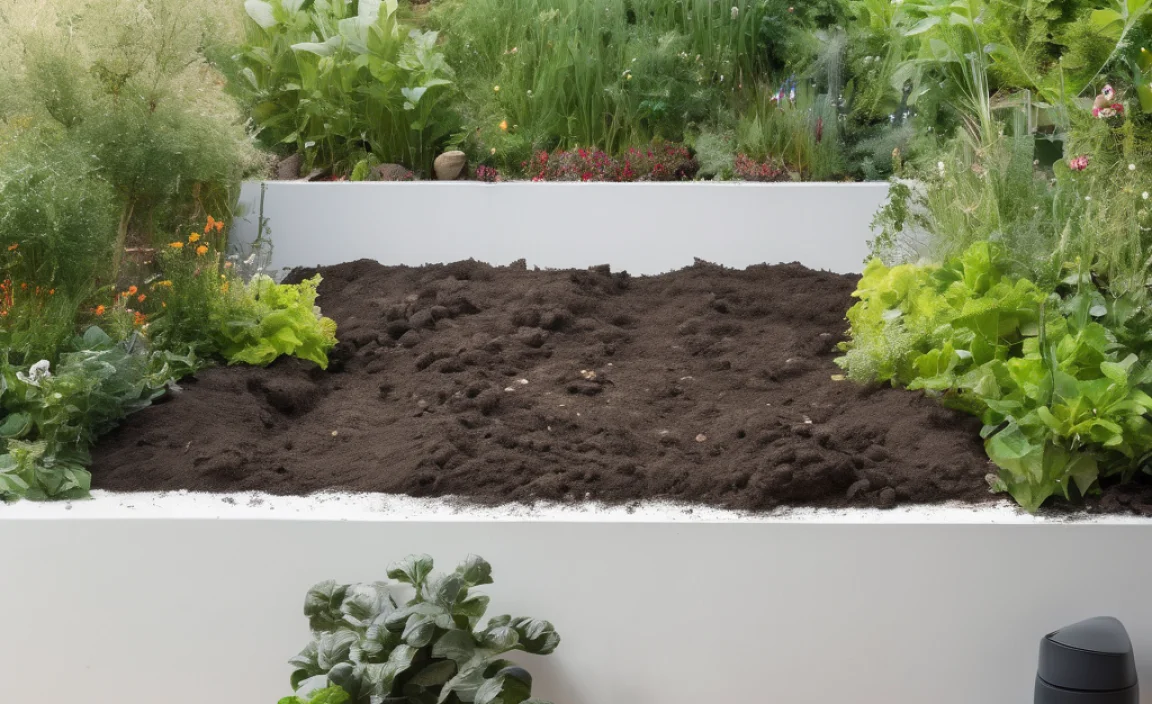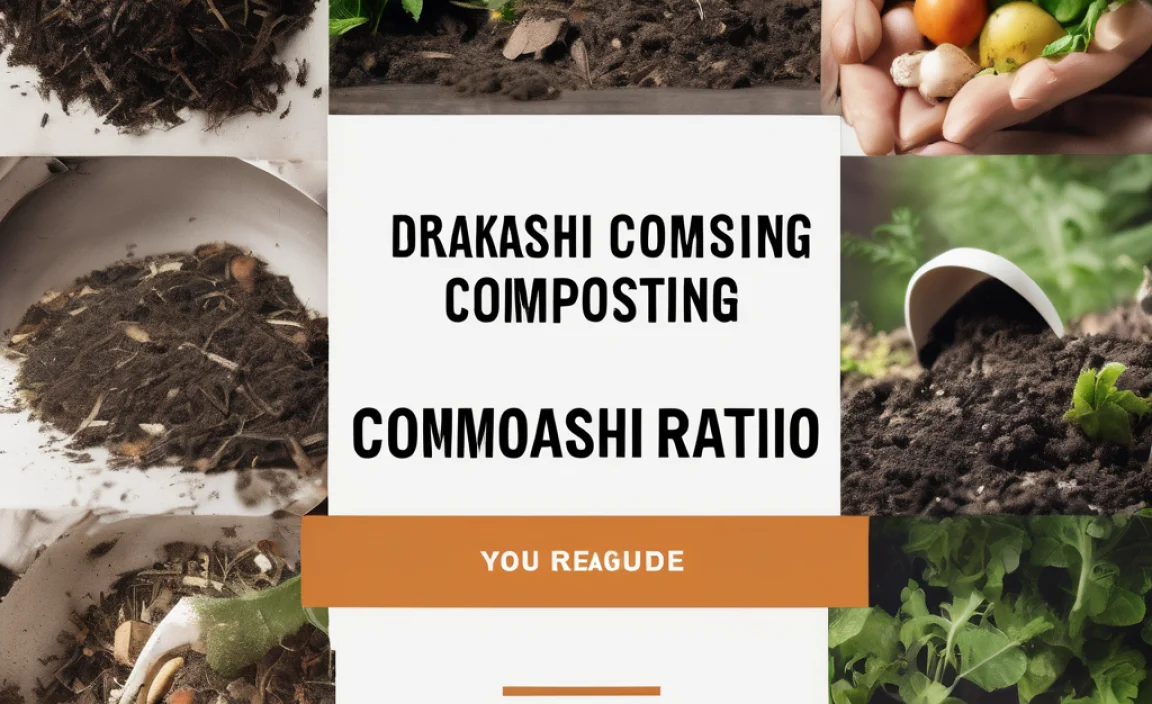Dealing with smelly compost bags can be a real bummer, right? You’re trying to do good for the planet and your garden, but that funk knocks the wind out of your sails. It’s a common problem, and the good news is, it’s totally fixable! We’ll walk through simple, effective ways to keep your compost smelling fresh. Get ready to say goodbye to the stink and hello to happy composting!
Compost Bags Odor: Genius Solutions for Freshness
Hey neighbors! Troy here from TopChooser, ready to tackle another common household puzzle. Composting is fantastic for your garden and the environment, but let’s be honest, sometimes those compost bags can get a little… fragrant. If the smell is holding you back from embracing the compost life, don’t worry! We’re going to break down exactly why compost bins and bags can get stinky and, more importantly, how to fix it. We’ll cover the basics, give you practical tips, and share some genius solutions that will make your composting experience a whole lot fresher. You’ve got this!
Why Do Compost Bags Smell in the First Place?
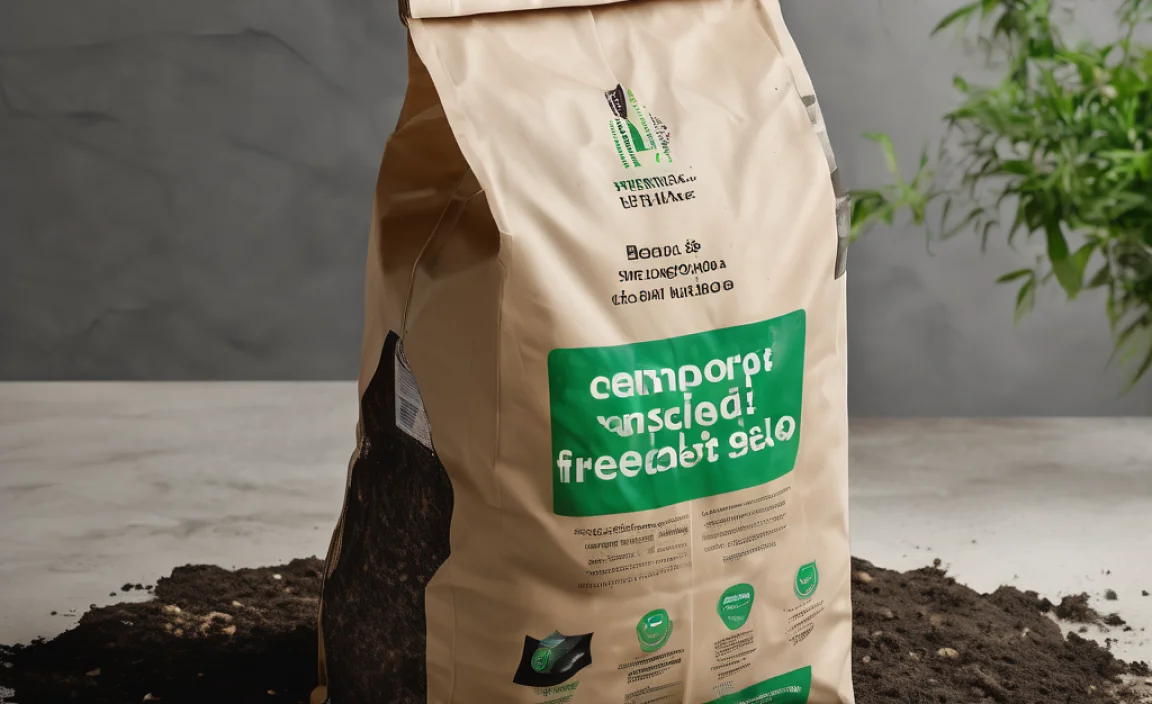
Before we dive into the fixes, it’s helpful to understand what’s causing the stink. Compost is a living system, a busy world of microorganisms breaking down organic matter. When things go wrong, it usually means there’s an imbalance. Think of it like a kitchen – if you leave out smelly food or don’t have good ventilation, things start to get unpleasant. The primary culprits for compost bag odor are:
- Too much moisture: Soggy compost creates an anaerobic (without oxygen) environment, which is a breeding ground for smelly bacteria.
- Wrong mix of materials: Composting works best with a good balance of “greens” (nitrogen-rich items like food scraps) and “browns” (carbon-rich items like dry leaves). Too many greens can lead to a sour, ammonia-like smell.
- Lack of airflow: Compost needs oxygen! Without it, anaerobic bacteria take over, producing foul odors like rotten eggs or sulfur.
- Putting in the wrong things: Certain food items, like meat, dairy, and greasy foods, can spoil quickly and attract pests, leading to strong, unpleasant smells.
Key Ingredients for Odor-Free Composting
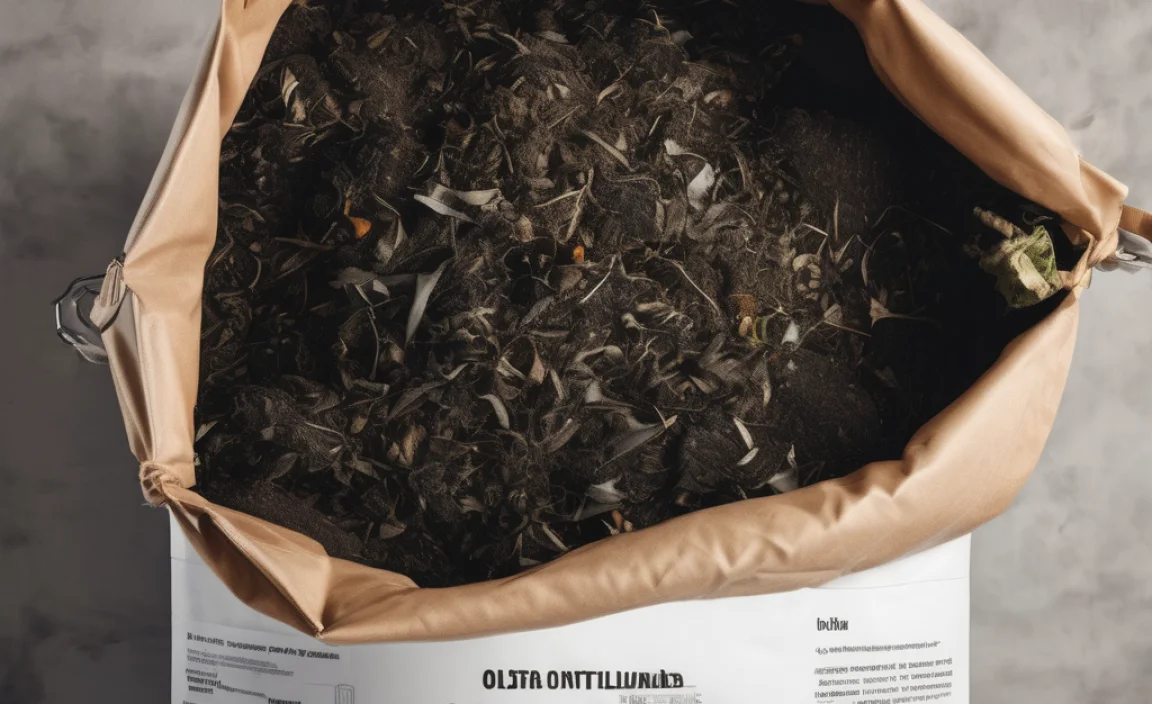
Think of your compost bin or bag as a recipe. You need the right ingredients in the right amounts for a delicious (and fresh-smelling!) outcome. The two main categories of materials are:
| Category | Examples | Role | Common Odor Issues if Imbalanced |
|---|---|---|---|
| Greens (Nitrogen-Rich) | Fruit and vegetable scraps, coffee grounds, tea bags, grass clippings, fresh garden waste | Provide nitrogen for microorganisms to thrive and generate heat | Ammonia-like smell (too many greens) |
| Browns (Carbon-Rich) | Dry leaves, shredded newspaper (non-glossy), cardboard, straw, sawdust, twigs | Provide carbon for microorganisms and add bulk for airflow | Earthy, musty smell (often indicates lack of moisture or greens, but generally not a “bad” smell) |
The magic ratio is generally considered to be around 2-3 parts Browns to 1 part Greens. This ensures your compost pile has enough carbon to balance out the nitrogen and allows for good air circulation.
Genius Solutions for Compost Bag Freshness
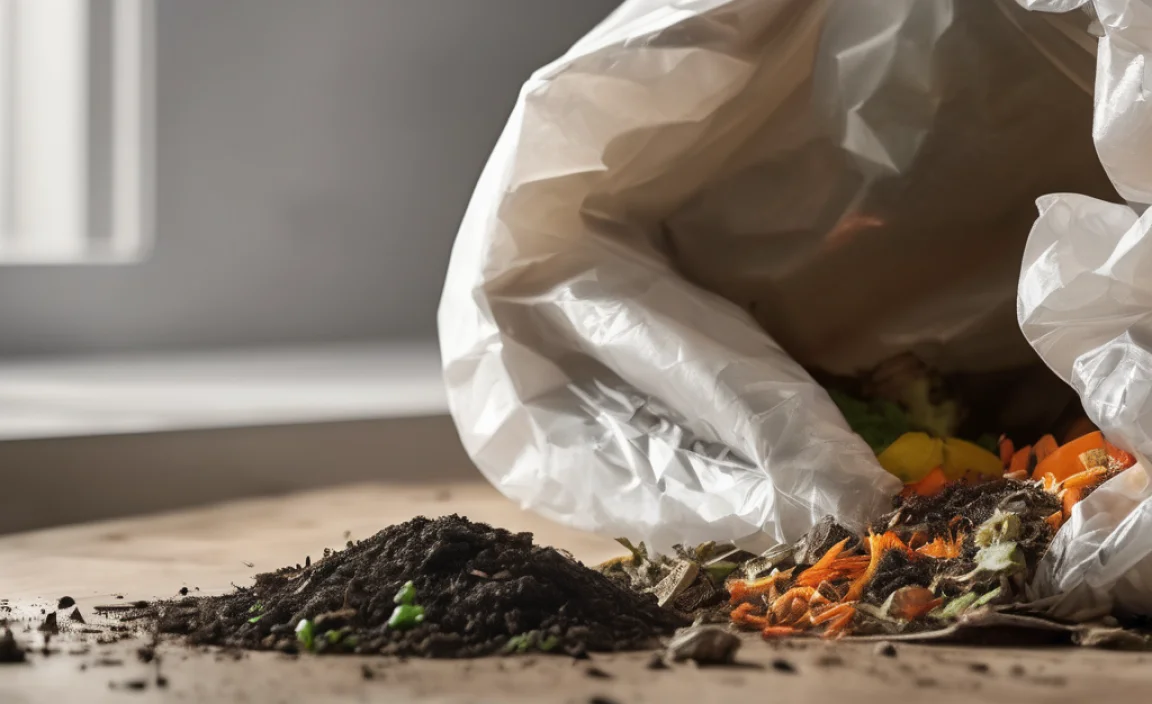
Now, let’s get to the good stuff – how to keep your compost bags smelling like… well, not much at all!
1. Balance Your Greens and Browns
This is the foundational rule of composting and the biggest factor in controlling odor. If your compost starts smelling like ammonia, you’ve likely added too many “greens.” On the other hand, a rotten egg smell usually means it’s too wet and lacking air.
- Action Plan: If you notice a strong ammonia smell, add more brown materials like shredded cardboard or dry leaves. If it’s too wet and smelly, try turning it to introduce air and adding more browns.
2. Ensure Good Aeration (Give it Some Air!)
Just like us, the microbes in your compost need to breathe. Lack of oxygen is a fast track to stinky, anaerobic decomposition. Compost bags can sometimes trap moisture and limit airflow, so you need to actively manage this.
- Action Plan:
- Turn your compost regularly: Aim to turn your compost pile or bag at least once a week. Use a pitchfork or a dedicated compost aerator tool. This mixes everything up, introduces oxygen, and helps the materials break down evenly.
- Use a breathable compost bag: If you’re using a bag system, ensure it has sufficient ventilation. Some compost bags are designed with micropores or mesh panels to allow air exchange. Look for bags that allow moisture to escape but keep the contents contained.
- Add bulky browns: Materials like straw, twigs, or shredded cardboard not only provide carbon but also create air pockets within the compost, improving drainage and airflow.
3. Control Moisture Levels
Compost should be about as damp as a wrung-out sponge. Too wet, and you get that dreaded anaerobic stink. Too dry, and the decomposition process slows down significantly.
- Action Plan:
- Add absorbent browns: If your compost is too wet, adding dry brown materials (wood chips, shredded paper, straw) is your best bet. They soak up excess moisture and improve aeration.
- Cover during heavy rain: If your compost bin or bag is exposed to the elements, consider covering it loosely with a tarp or lid during prolonged rainy periods to prevent it from becoming waterlogged. Ensure the cover still allows for some air circulation.
- Proper drainage: If you’re using a bin, make sure it has drainage holes at the bottom. For bags, place them on a well-draining surface.
4. Bury Your Food Scraps (Greens)
When adding new food scraps (greens) to your compost bag, try to bury them under a layer of existing compost or brown materials. This helps to contain any initial odors and deters pests.
- Action Plan: Always top off your compost bag with a layer of dry leaves, shredded paper, or sawdust after adding fresh kitchen scraps.
5. Choose What You Compost Wisely
Not all kitchen scraps are created equal when it comes to composting, especially for beginners aiming for odor-free results. Some items can quickly turn your compost into a smelly mess.
- Things to limit or avoid:
- Meat, fish, and bones
- Dairy products (milk, cheese, yogurt)
- Oily or greasy foods
- Diseased plants
- Pet waste (dog and cat feces)
- Stick to the basics: Focus on fruit and vegetable scraps, coffee grounds, tea bags, eggshells, and yard waste like leaves and grass clippings.
6. Add Odor-Absorbing Materials
Sometimes, even with good practices, a little odor can creep in. Certain materials can help absorb or neutralize smells.
- Options include:
- Charcoal briquettes (natural, no lighter fluid): Lightly crushed briquettes can help absorb odors.
- Molasses or finished compost: A small amount stirred in can introduce beneficial microbes that outcompete the odor-producing ones.
- Wood ash: Use sparingly, as too much can make your compost too alkaline. A small sprinkle can help neutralize smells.
- Diatomaceous earth (food grade): While not for odor directly, it can help with any tiny pests that might be contributing to smell. Use sparingly as it can affect your compost’s moisture.
7. The Role of Worms (Vermicomposting) for Odor Control
If you’re looking for a super-efficient and generally odor-free composting method, consider vermicomposting (composting with worms!). Red wiggler worms are excellent at breaking down food scraps in a contained system, often with minimal smell.
- Benefits: Worm bins are typically compact and can be kept indoors or in a sheltered outdoor spot. The system is designed to process food waste quickly.
- Considerations: Worm composting has its own set of rules (e.g., avoiding citrus and spicy foods for the worms), but when managed correctly, it’s one of the freshest ways to compost. For more on starting a worm bin, check out resources from the EPA.
While we’re talking about compost bags specifically, it’s worth noting that some “compostable” bags are designed to break down in industrial composting facilities, not necessarily in your backyard bin. If you’re using a bag as part of your home composting process, ensuring it contributes to airflow is key.
Common Compost Bag Material Odor Issues At a Glance
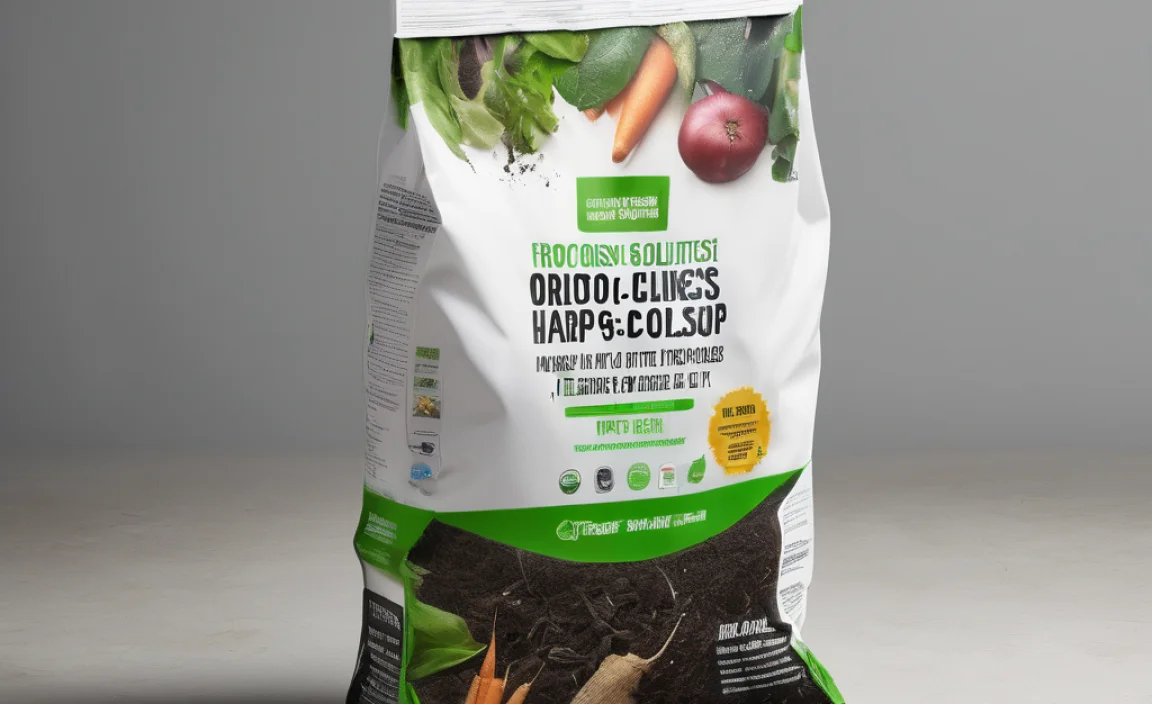
Here’s a quick rundown of what to look for and what might be going wrong specific to bag composting:
| Type of Odor | Likely Cause | Likely Solution |
|---|---|---|
| Rotten Egg (Sulfur) | Anaerobic conditions (lack of oxygen), too wet | Turn compost, add dry browns (leaves, cardboard), improve bag ventilation |
| Ammonia/Urine | Too many nitrogen-rich “greens” | Add more carbon-rich “browns” (shredded paper, sawdust, dry leaves) |
| Sour/Vinegary | Too much food waste (greens), too acidic, not enough browns | Add more browns, turn to aerate, ensure good drainage. Avoid adding excessive amounts of citrus peels. |
| Earthy/Musty (Normal) | Decomposition process, slight moisture | This is generally a good sign! If it becomes too damp, add browns. Ensure good air flow. |
Tips for Specific Compost Bag Types
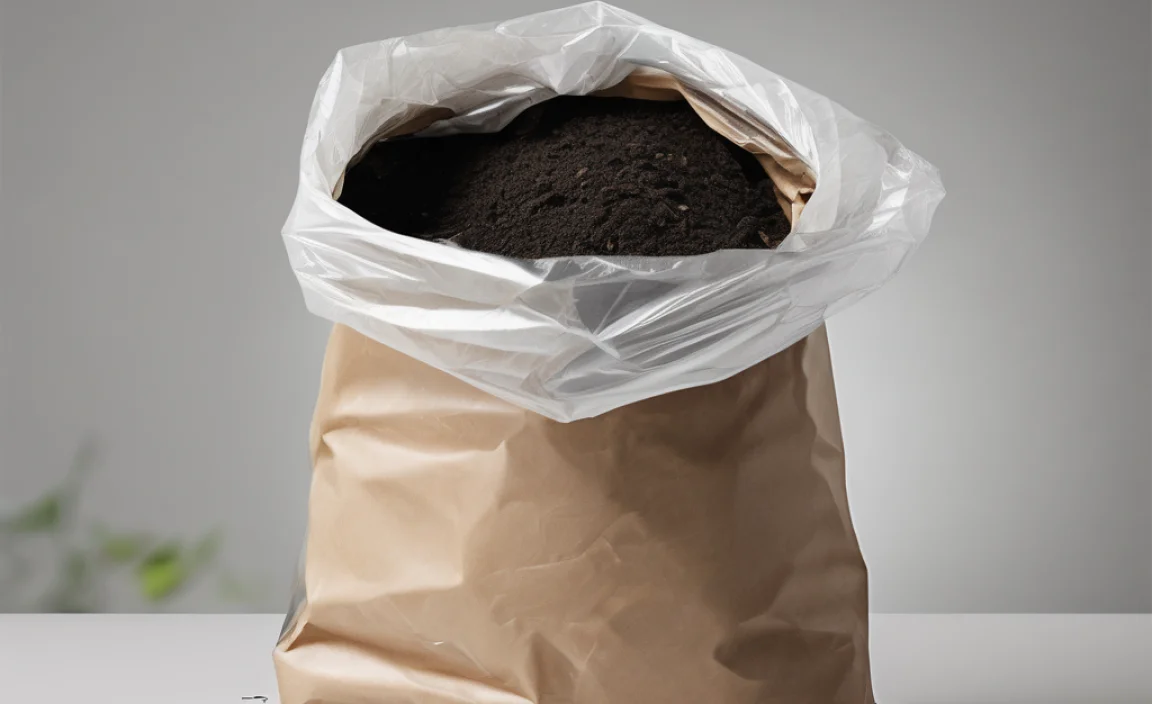
The type of compost bag you use can influence how well it breathes and manages moisture.
- Biodegradable/Compostable Bags: If using these to collect kitchen scraps before adding to a larger bin or pile, choose ones designed for quick breakdown and good breathability. They can sometimes trap moisture if not managed.
- Fabric Compost Bags: These are often designed with breathability in mind, allowing air and moisture to escape. They can be a great option for smaller-scale composting.
- DIY Bags from Bins: If you’re using a large container and modifying it into a “bag” system, ensure you drill plenty of holes for ventilation. You might also line it with permeable material if needed.
Troubleshooting Persistent Odors
If you’ve tried the basic fixes and your compost bags still smell, don’t despair! Here are a few more advanced troubleshooting steps:
- Check the size of your pile: Very small piles might struggle to generate enough heat to break down materials effectively, leading to slower decomposition and potential odors. Larger piles (at least 3x3x3 feet is ideal for hot composting) are generally more stable and less prone to smelling. For bag composting, this means ensuring your bag is of adequate size for the volume of materials you’re adding.
- Consider activators: While not always necessary, compost activators can help jump-start the decomposition process and introduce beneficial microbes. These are often commercially available, or you can use a shovelful of finished compost from a healthy pile.
- Temperature check: A healthy, “hot” compost pile will generate heat as it breaks down. If your pile is consistently cool, it might be too wet, lacking nitrogen, or poorly aerated.
- Screening and restarting: In extreme cases, if a compost batch is truly “stuck” and persistently smelly, you might consider screening out the unfinished material and starting the compost process again with the problematic components, ensuring better balance.
For more insights into the science behind composting and best practices, the U.S. Environmental Protection Agency (EPA) offers excellent resources.
Conclusion: Fresh Compost is Happy Compost!
See? Dealing with compost bag odor is totally manageable and often quite simple once you understand the culprits. By keeping an eye on your green-to-brown ratio, ensuring plenty of airflow, and managing moisture, you can transform your composting experience from stinky to sensational. Remember, composting is a journey, and even experienced composters run into the occasional whiffy batch. The key is to stay practical, make adjustments, and you’ll soon be enjoying the benefits of nutrient-rich compost without the unpleasant side effects. Happy, fresh composting, everyone!
FAQ: Your Burning Compost Bag Questions Answered
Got more questions about those whiffy compost bags? We’ve got answers!
Q1: How often should I turn my compost bag?
A1: Aim to turn or aerate your compost bag at least once a week. More frequent turning can speed up the composting process and improve odor control.
Q2: Can I compost in a closed plastic bin?
A2: Yes, but you must drill plenty of holes! Closed bins without adequate ventilation can quickly become anaerobic and smelly. Make sure there are holes in the sides and bottom for air and drainage.
Q3: What’s the difference between a compostable bag and a regular plastic bag for collecting scraps?
A3: Compostable bags are designed to break down. Regular plastic bags are not and will persist in the environment. If using bags for composting, choose ones specifically labeled as compostable and breathable. Otherwise, a simple container with good ventilation is better.
Q4: My compost bag smells like rotten eggs. What’s the quickest fix?
A4: This is a classic sign of lack of oxygen. Immediately turn, aerate, and add plenty of dry brown materials like shredded cardboard or dry leaves to absorb moisture and improve airflow.
Q5: How much charcoal should I add to my compost bag for odor control?
A5: Start small. A light dusting or a small handful of crushed natural charcoal briquettes (no lighter fluid!) sprinkled into the bin can help. You don’t want to overdo it, as it might affect the compost’s structure.
Q6: Is it okay to add citrus peels to my compost bag?
A6: Yes, but in moderation. Large amounts of citrus peels can make your compost too acidic, potentially slowing down decomposition and causing a sour smell. Chop them up and balance them with plenty of brown materials.
Q7: When can I tell if my compost is finished and ready to use?
A7: Finished compost should be dark, crumbly, and smell earthy, like a forest floor. You shouldn’t be able to recognize the original materials you put in. If it still smells strong or looks like the original ingredients, it needs more time to break down.
.lwrp.link-whisper-related-posts{
margin-top: 40px;
margin-bottom: 30px;
}
.lwrp .lwrp-title{
}.lwrp .lwrp-description{
}
.lwrp .lwrp-list-container{
}
.lwrp .lwrp-list-multi-container{
display: flex;
}
.lwrp .lwrp-list-double{
width: 48%;
}
.lwrp .lwrp-list-triple{
width: 32%;
}
.lwrp .lwrp-list-row-container{
display: flex;
justify-content: space-between;
}
.lwrp .lwrp-list-row-container .lwrp-list-item{
width: calc(25% – 20px);
}
.lwrp .lwrp-list-item:not(.lwrp-no-posts-message-item){
max-width: 150px;
}
.lwrp .lwrp-list-item img{
max-width: 100%;
height: auto;
object-fit: cover;
aspect-ratio: 1 / 1;
}
.lwrp .lwrp-list-item.lwrp-empty-list-item{
background: initial !important;
}
.lwrp .lwrp-list-item .lwrp-list-link .lwrp-list-link-title-text,
.lwrp .lwrp-list-item .lwrp-list-no-posts-message{
}@media screen and (max-width: 480px) {
.lwrp.link-whisper-related-posts{
}
.lwrp .lwrp-title{
}.lwrp .lwrp-description{
}
.lwrp .lwrp-list-multi-container{
flex-direction: column;
}
.lwrp .lwrp-list-multi-container ul.lwrp-list{
margin-top: 0px;
margin-bottom: 0px;
padding-top: 0px;
padding-bottom: 0px;
}
.lwrp .lwrp-list-double,
.lwrp .lwrp-list-triple{
width: 100%;
}
.lwrp .lwrp-list-row-container{
justify-content: initial;
flex-direction: column;
}
.lwrp .lwrp-list-row-container .lwrp-list-item{
width: 100%;
}
.lwrp .lwrp-list-item:not(.lwrp-no-posts-message-item){
max-width: initial;
}
.lwrp .lwrp-list-item .lwrp-list-link .lwrp-list-link-title-text,
.lwrp .lwrp-list-item .lwrp-list-no-posts-message{
};
}

I am passionate about home engineering. I specialize in designing, installing, and maintaining heating, ventilation, and air conditioning systems. My goal is to help people stay comfortable in their homes all year long.

